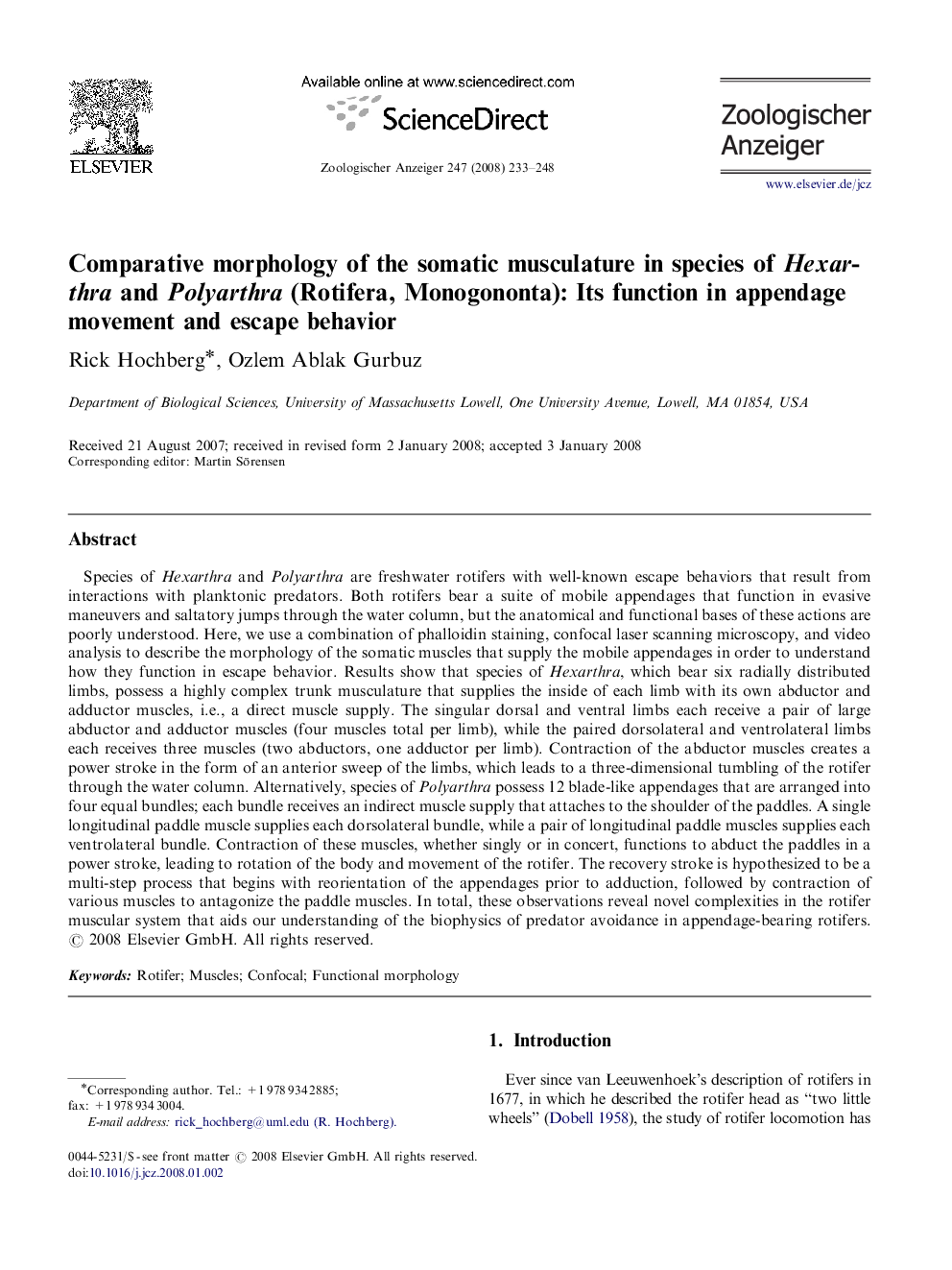| کد مقاله | کد نشریه | سال انتشار | مقاله انگلیسی | نسخه تمام متن |
|---|---|---|---|---|
| 2790845 | 1154797 | 2008 | 16 صفحه PDF | دانلود رایگان |

Species of Hexarthra and Polyarthra are freshwater rotifers with well-known escape behaviors that result from interactions with planktonic predators. Both rotifers bear a suite of mobile appendages that function in evasive maneuvers and saltatory jumps through the water column, but the anatomical and functional bases of these actions are poorly understood. Here, we use a combination of phalloidin staining, confocal laser scanning microscopy, and video analysis to describe the morphology of the somatic muscles that supply the mobile appendages in order to understand how they function in escape behavior. Results show that species of Hexarthra, which bear six radially distributed limbs, possess a highly complex trunk musculature that supplies the inside of each limb with its own abductor and adductor muscles, i.e., a direct muscle supply. The singular dorsal and ventral limbs each receive a pair of large abductor and adductor muscles (four muscles total per limb), while the paired dorsolateral and ventrolateral limbs each receives three muscles (two abductors, one adductor per limb). Contraction of the abductor muscles creates a power stroke in the form of an anterior sweep of the limbs, which leads to a three-dimensional tumbling of the rotifer through the water column. Alternatively, species of Polyarthra possess 12 blade-like appendages that are arranged into four equal bundles; each bundle receives an indirect muscle supply that attaches to the shoulder of the paddles. A single longitudinal paddle muscle supplies each dorsolateral bundle, while a pair of longitudinal paddle muscles supplies each ventrolateral bundle. Contraction of these muscles, whether singly or in concert, functions to abduct the paddles in a power stroke, leading to rotation of the body and movement of the rotifer. The recovery stroke is hypothesized to be a multi-step process that begins with reorientation of the appendages prior to adduction, followed by contraction of various muscles to antagonize the paddle muscles. In total, these observations reveal novel complexities in the rotifer muscular system that aids our understanding of the biophysics of predator avoidance in appendage-bearing rotifers.
Journal: Zoologischer Anzeiger - A Journal of Comparative Zoology - Volume 247, Issue 3, 9 July 2008, Pages 233–248